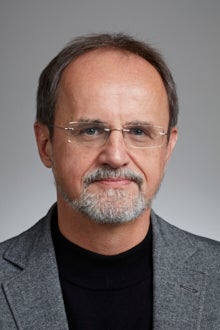The Waterloo Institute for Nanotechnology (WIN) has launched a new seminar series, Quantum Nano Collision (QNC) Seminar Series, to deepen the engagement of the Waterloo researchers who work at the interface of quantum and nanotechnologies. This seminar series will also provide opportunities for senior graduate students, post-doctoral fellows, and research associates to present their innovative work along with the faculty members to bring together the excitement around these cutting-edge technologies that would shape our future.

The next talk for the QNC Seminar Series will be delivered by Professor Zbig Wasilewski.
Zbig Wasilewski is a Professor in the Electrical and Computer Engineering Department, cross-appointed to the Department of Physics and Astronomy at the University of Waterloo. Dr. Wasilewski is also a core member of the Waterloo Institute for Nanotechnology and has an Associate Faculty position at the Institute for Quantum Computing. He is internationally renowned for his contributions to the field of Molecular Beam Epitaxy, quantum-dot and quantum-well photonic devices, and quantum structures and devices based on high mobility 2D electron gases.
Towards room temperature, compact sources of coherent terahertz radiation
The so-called terahertz gap (~1–10 THz) has received much attention over the last two decades because of many potential applications waiting for compact, portable terahertz radiation sources. The report of the first [1] terahertz quantum cascade laser (QCL) in 2002 brought much hope to the community. However, the possibility of ever reaching room temperature operation was considered unlikely by many. Indeed, after a slow ascent of the maximum operating temperature to 200K in 2012, [2] the progress in the field stalled for close to a decade. However, the recent demonstration of GaAs/AlGaAs THz QCL lasing up to 250 K, [3] brought back the vigor to these pursuits. Indeed, with the current understanding, no hard physical obstacles would preclude achieving lasing action at still higher temperatures.
Nevertheless, the prolonged stagnation in terahertz QCL progress inspired many to look for alternatives. Our research group has embarked on a parallel pursuit of a coherent terahertz light source based on a very different principle, namely the polariton lasing mechanism – more analogous to Bose-Einstein condensation than conventional lasing, but with a similar end result – in arrays of AlGaAs parabolic quantum wells. [4] Albeit demonstration of coherent terahertz radiation at 300 K from such quantum systems may be still years away, the research has already produced important results furthering our understanding of plasmons and evidence of polariton formation up to 200 K in the dispersive cavities necessary for polariton scattering.
This presentation will outline the physics behind both types of terahertz sources, show the current status of research in these projects, and discuss the key challenges ahead.